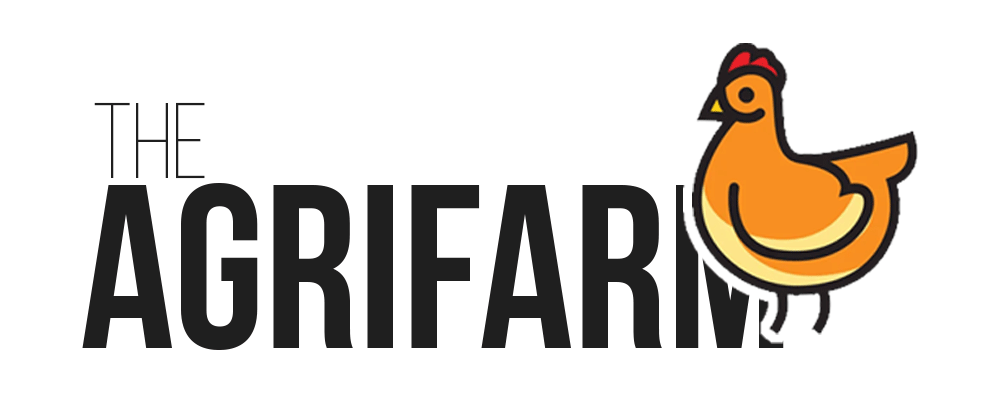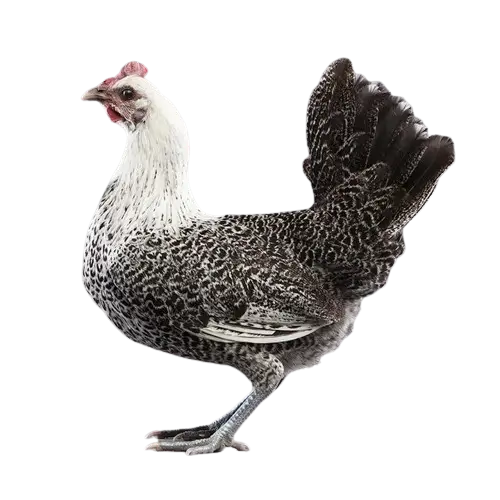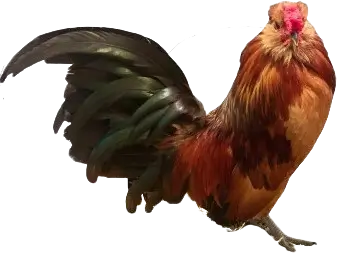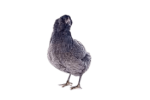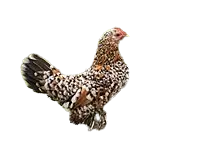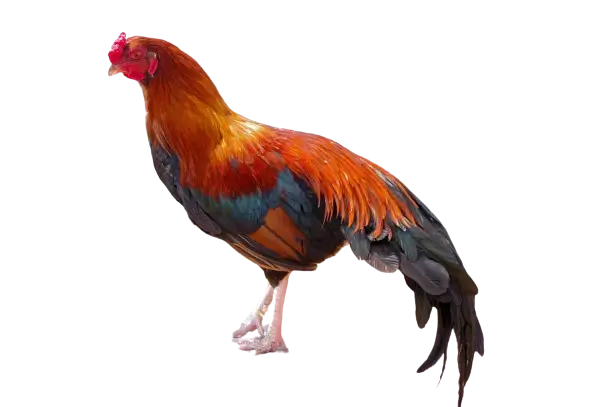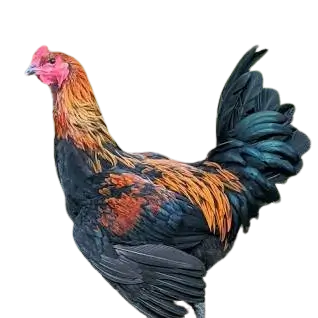Coucou de Rennes
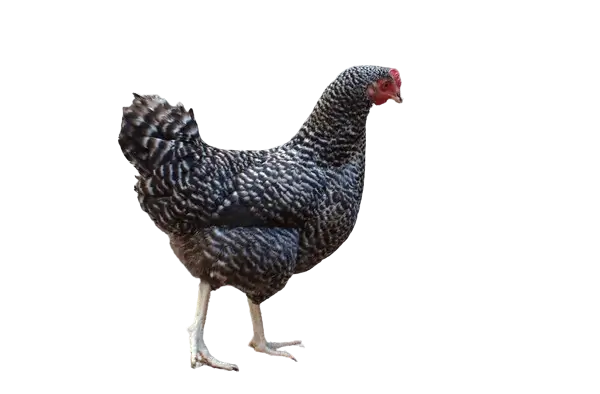
The Coucou de Rennes are a local chicken breed that dates back to the 19th century and was created by crossing several French breeds, such as the Crevecoeur, Houdan, and Dorking. These chickens were known for their meat and eggs and were highly valued in the Rennes markets. The breed declined after the Second World War due to the introduction of more productive and commercial breeds. However, in 1988, a rebreeding effort was started by the Ecomuseum of Rennes with the help of local farmers and enthusiasts. The breed was revived, and an association of Coucou de Rennes chicken producers was formed to promote the breed.
The Coucou de Rennes chickens are also known as Rennes Cuckoo Chicken, Poulet Coucou de Rennes, Coucou de Bretagne, Brittany Cuckoo Chicken, Renneser Kuckuckshuhn, and Gallina Coucou de Rennes. The word “coucou” means “cuckoo” in French and refers to the barred or striped plumage of the chickens, which resembles the feathers of the cuckoo bird.
These chickens are a heavy, dual-purpose breed suitable for meat and egg production. They are recognized by the French Poultry Federation and the Rare Poultry Society but have yet to be accepted by the American Poultry Association or the Poultry Club of Great Britain.
Colors
The Coucou de Rennes chickens have a unique and attractive feather pattern called the cuckoo or barred pattern. The main color of these chickens is black, with white or grey bands. However, variations of color also exist, such as black cuckoo, blue cuckoo, red cuckoo, and white cuckoo.
Weight of male and female
The average weight of male chickens (roosters) is 3 to 4 kg (6.6 to 8.8 lbs), while female chickens (hens) weigh between 2.5 to 3 kg (5.5 to 6.6 lbs).
Annual egg production rate, egg color, and egg weight
These chickens produce about 180 to 200 eggs annually, which are cream and tinted with a smooth and glossy shell. The eggs are also large, weighing about 65 to 70 grams (2.3 to 2.5 oz) each.
Coucou de Rennes Chicken Size
Based on the average and general appearance of the breed, the estimated size of male Coucou de Rennes chickens (roosters) is 40 to 50 cm (15.7 to 19.7 in) in length, 30 to 40 cm (11.8 to 15.7 in) in height, and 25 to 35 cm (9.8 to 13.8 in) in width. The estimated size of female Coucou de Rennes chickens (hens) is 35 to 45 cm (13.8 to 17.7 in) in length, 25 to 35 cm (9.8 to 13.8 in) in height, and 20 to 30 cm (7.9 to 11.8 in) in width.
Yearly birth rate and life span of Coucou de Rennes chickens
The Coucou de Rennes chickens are fertile and prolific, producing yearly offspring. The yearly birth rate of the Coucou de Rennes chickens depends on the number of hens and roosters, the mating frequency, the incubation period, and the hatchability rate, but the average birth rate is as follows:
- Male chickens (roosters): 1 to 2 offspring per year
- Female chickens (hens): 10 to 15 offspring per year
The Coucou de Rennes chickens are also long-lived, having a longer life span than most other chicken breeds. The life span of the Coucou de Rennes chickens depends on their health.
Breeding hints and tips
The Coucou de Rennes chickens are an easy and rewarding breed. They are naturally broody and maternal and can hatch and raise their chicks without an incubator or a brooder. However, you can improve the breeding success and the quality of the offspring by following these tips:
Select the best breeding stock
Choose healthy, vigorous chickens that conform to breed standards. Look for those with a good temperament, a good egg-laying record, and genetic diversity. The ideal ratio of roosters to hens is 1 to 10 to ensure good fertility and a low inbreeding rate.
Provide a suitable breeding environment
The Coucou de Rennes chickens need a spacious, secure coop with a comfortable, clean nesting area. They should also have access to a large, fenced run with plenty of grass, plants, and insects. Protect them from predators, pests, and extreme weather conditions.
Manage the breeding cycle
Coucou de Rennes chickens are seasonal breeders and are more likely to mate and hatch in spring and summer when daylight is longer. You can control the breeding cycle by adjusting the artificial lighting, feeding, and separating breeding pairs. The optimal incubation period for eggs is 21 days, and the optimal hatching rate is 80%.
Care for the chicks
Coucou de Rennes is strong, independent, and can follow their mother hen from the first day. Please keep them safe and warm, away from other adult chickens. Feed them a high-protein, high-calcium starter feed and provide fresh water and grit. Vaccinate and deworm them as needed, and monitor for any signs of illness or injury.
General Characteristics
The Coucou de Rennes chickens are a remarkable and valuable breed with many positive characteristics and qualities, including:
Beauty
They have a striking and elegant appearance with their cuckoo feather pattern, bright red comb and earlobes, and whitish-yellow legs. They add charm and diversity to any flock.
Personality
Coucou de Rennes chickens have a calm, friendly, gentle, and docile temperament. They are easy to handle and train, get along well with other chickens and animals, and are curious and intelligent, enjoying exploring and foraging.
Productivity
The Coucou de Rennes chickens are a dual-purpose breed providing meat and eggs. They have tender and tasty meat with a fine and delicate texture and large and nutritious eggs with cream and tinted color. They are suitable for commercial and domestic production, having a good feed conversion ratio and a low maintenance cost.
Adaptability
The Coucou de Rennes chickens are a rustic and vigorous breed, meaning they can thrive in different climates and environments. They can tolerate hot and cold weather and resist common diseases and parasites. They are also hardy and self-reliant, surviving on a varied and natural diet.
